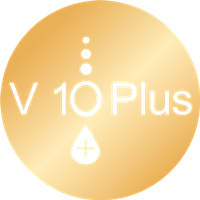Retinol, a derivative of vitamin A, has become a go-to ingredient in skincare for its powerful effects on both anti-aging and acne treatment. Whether you’re looking to reduce the appearance of fine lines, wrinkles, and age spots or seeking to clear up acne, retinol can be an effective solution. However, as a potent active ingredient, it requires careful use, especially if you’re new to it. Here’s a beginner’s guide to help you understand retinol’s benefits, how to incorporate it into your skincare routine, and what to expect from its use.
What is Retinol?
Retinol is a type of retinoid, a group of compounds derived from vitamin A, that helps promote cell turnover, increase collagen production, and prevent clogged pores. It works by accelerating the natural process of skin cell shedding, allowing fresher, healthier skin cells to take their place. Because of these properties, retinol is widely used to treat signs of aging, such as wrinkles and fine lines, as well as acne.
Benefits of Retinol for Skin
-
Anti-Aging: Retinol is known for its anti-aging benefits. It stimulates collagen production, which helps maintain the skin's firmness and elasticity, reducing the appearance of fine lines and wrinkles. It also helps to even out skin tone and reduce hyperpigmentation, such as age spots or sun spots.
-
Acne Treatment: Retinol helps to prevent clogged pores by promoting cell turnover. This means it can reduce the formation of comedones (clogged pores), blackheads, and pimples, making it highly effective in managing acne. It also has anti-inflammatory properties, which can reduce the redness and swelling associated with acne breakouts.
-
Improves Skin Texture: Regular use of retinol can enhance the overall texture of your skin. It helps to fade scars and post-acne marks, leaving your skin smoother and more even-toned.
-
Reduces Hyperpigmentation: Retinol can help fade dark spots, sun damage, and acne scars over time by speeding up skin cell turnover, revealing brighter and more radiant skin.
How to Use Retinol: A Step-by-Step Guide for Beginners
If you’re new to retinol, it’s important to introduce it slowly into your skincare routine to avoid irritation, redness, or peeling. Here's how to use it effectively:
1. Start Slow
For beginners, it’s crucial to start with a low concentration of retinol (typically 0.25% or 0.5%). You should apply it only 2 to 3 times a week to allow your skin to build tolerance. Gradually increase the frequency of use as your skin adapts, eventually using it every night if your skin can tolerate it.
2. Apply Retinol at Night
Retinol makes your skin more sensitive to the sun, so it's essential to use it only in your nighttime skincare routine. After cleansing your face, apply a pea-sized amount of retinol to your face, avoiding the delicate areas around your eyes and mouth. Let it absorb before applying any other products.
3. Follow with Moisturizer
Retinol can be drying and irritating to the skin, especially for beginners. To combat this, always follow up with a hydrating moisturizer to help lock in moisture and reduce potential dryness. Consider using a thick, nourishing cream to soothe your skin after retinol application.
4. Use Sunscreen During the Day
Because retinol increases your skin’s sensitivity to the sun, using sunscreen daily is crucial. Apply a broad-spectrum SPF of 30 or higher every morning, even on cloudy days, to protect your skin from UV damage and prevent sunburn.
5. Be Patient
Retinol works gradually, and it can take several weeks to notice significant results. During the first few weeks of use, you may experience dryness, redness, or slight peeling as your skin adjusts. This is normal, but if irritation persists, reduce the frequency of application or consult a dermatologist.
Common Side Effects of Retinol
While retinol is highly effective, it can cause some side effects, especially in the initial stages of use. These can include:
- Dryness: Skin can become dry and flaky, especially if you’re using a high concentration of retinol.
- Redness and Irritation: This is common for beginners and usually subsides as your skin builds tolerance.
- Peeling: As retinol increases cell turnover, it can cause peeling, which is a sign that it's working to remove dead skin cells.
- Increased Sensitivity to Sun: Retinol can make your skin more sensitive to UV rays, so sun protection is critical.
Tips for Beginners Using Retinol
- Patch Test: Before applying retinol all over your face, perform a patch test on a small area of your skin to check for any adverse reactions.
- Avoid Using Other Active Ingredients: When starting retinol, avoid using other potent actives, such as AHAs (alpha-hydroxy acids) or Vitamin C, at the same time, as they can further irritate your skin.
- Hydrate Well: Since retinol can dry out your skin, using a rich, hydrating moisturizer and drinking plenty of water will help maintain skin hydration.
Conclusion
Retinol is a powerful ingredient that can provide numerous benefits for your skin, including reducing the signs of aging and helping to clear acne. However, its potency means that it should be used cautiously, especially for beginners. By starting with a low concentration, applying it at night, and following up with sunscreen and moisturizer, you can reap the benefits of this ingredient while minimizing the risk of irritation. Patience is key when using retinol, and with consistent use, you'll begin to see smoother, clearer, and more youthful-looking skin.


